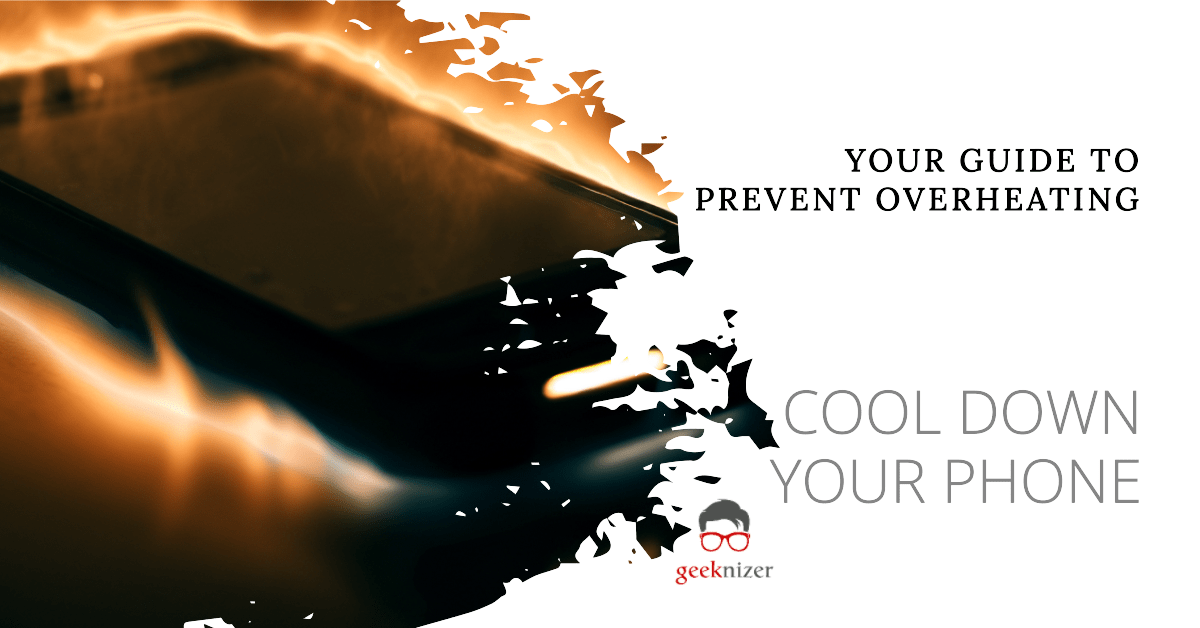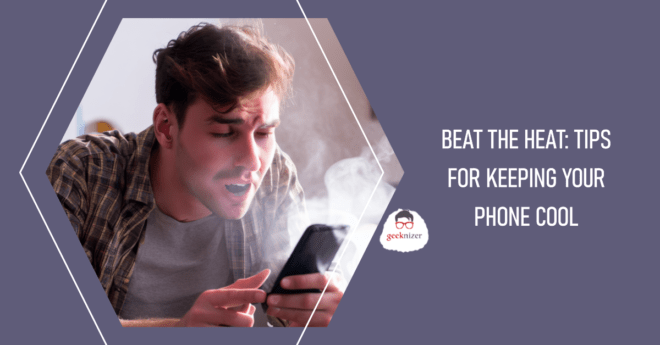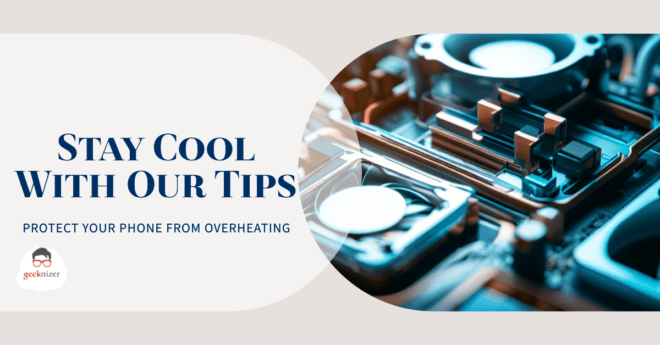Do you wonder why your phone is very hot? Irony of life, we all feel the heat sometimes. We get through it. Have you ever wondered how your smartphone handles the heat? Are there any side effects to your phone getting hot? Let’s deep-dive into why smart mobiles tend to heat up in the first place. We further explore the risks associated with hot phones and ultimately equip you with top-notch solutions to keep your phone cool.
Why Do Smart Mobiles Overheat?
Causes of Overheating
- High CPU Usage: Gaming or using heavy apps.
- Poor Charging Habits: Using non-standard chargers or overcharging.
- Environmental Factors: Sunlight, warm rooms, and even your pocket can be the culprit.
Risks of Overheating
- Battery Drain
- Laggy Performance
- Hardware Damage
Jump to the checklist – Methods to Avoid Smartphone Overheating in 2023
Does overheating actually matter?
Imagine you’re in the middle of an epic gaming session and bam! Your phone starts cooking. Not only can overheating slow down your device’s performance, but it also disrupts that immersive experience. You didn’t buy phones to watch them sputter and fail, right?
And oh boy, the battery! Overheating is like kryptonite to your battery’s lifespan. The heat messes with the battery cells, and the next thing you know, you’re searching for “cell phones for sale cheap” because yours just gave up the ghost.
Most common reasons for smartphone overheating
- Intensive multitasking
- Running high-end games
- Inadequate cooling systems
- Environmental factors
Are Removable Battery Phones Better?
Phones with removable batteries, like some older types of smart phones, can be easier to cool down. Just pop out the battery, let it cool, and you’re good to go. This is a handy feature, especially if your phone gets hot fast.
How to Test If Your Phone is Overheating
You don’t have to be a tech wiz to figure it out. There are several apps and built-in settings that can help. For Android users, navigate to Settings > Battery (or Battery Information, depending on your device). Here, you’ll find your phone temperature, among other battery statistics. Neat, eh? You could also head to the Play Store to download apps like the GSam Battery Monitor. It goes beyond just battery stats and includes temperature monitoring too.
I’m afraid Apple hasn’t included a built-in temperature checker (boo!) for our iPhone owner friends, but don’t fret over it! Several third-party apps on the App Store help keep tabs on how hot your phone gets. One such app is Battery Life, which provides a range of details, including your device’s operating temperature.
Want to really get into the nitty-gritty? For both Android and iPhone users, CPU Monitor is another solid app that details your phone’s temperature, CPU usage, and more. So, keep your phone cool and carry on!
Heating War Contenders: Best Mobiles in the World
Let’s have a look at the relationship of a bigger phone battery with its tendency to get really hot. At first glance, a beefy battery sounds awesome, right? More juice to power that epic gaming session or that movie marathon. But hold your horses! A larger battery can generate more heat, especially during charging or intensive gaming and video streaming tasks. The culprit is often inefficiency in the charging process or the processor’s power management, which can generate excess heat.
For example, if you have a 5,000mAh battery and your phone’s system isn’t optimized for it, your google searches will look like this – “phone overheating when charging”. We bet you’ll be on Google, faster than you can say “Snapdragon.” No offense!
| Smartphone | Processor | RAM | Avg. battery life |
| iPhone 13 Pro Max | A15 Bionic | 6GB | 75 hrs |
| Samsung Galaxy S21 Ultra | Exynos 2100/Snapdragon 888 | 12GB | 68 hrs |
| Google Pixel 6 Pro | Google Tensor | 12GB | 65 hrs |
| OnePlus 9 Pro | Snapdragon 888 | 12GB | 63 hrs |
| Xiaomi Mi 11 Ultra | Snapdragon 888 | 12GB | 61 hrs |
It’s not just size, it’s how you use it
A well-engineered thermal management system can offset the heat produced by a large battery. Brands like Apple and Samsung invest in advanced cooling solutions like vapor chambers or graphene sheets, allowing their big-battery devices to run cooler. So, a large battery doesn’t automatically mean your phone will overheat. Heating up has more to do with the synergy between the battery, the processor, and the cooling system.
How does your phone handle the heat?
Not all heroes wear capes; some sport intricate thermal management systems. Your smart phone comes equipped with several cool (like, literally!) features. The following features in your phone help keep your phone cool.
Liquid cooling systems
It gives your phone two main advantages. First, better performance by keeping the CPU and GPU running at optimal levels. Second, keep you comfortable by avoiding a hot phone against your cheek during long calls!
Remember the water-cooled gaming PCs? Smartphones are going the same way, to keep their cool. A smart phone liquid cooling involves a heat pipe filled with a liquid coolant. As soon as the phone begins to heat up, coolant evaporates and moves towards the cooler ends of the pipe, taking the heat away from the processor.
For example, the liquid cooling system in Samsung’s flagship Galaxy S21 Ultra flagship phone effectively maintains a stable temperature even during demanding tasks like gaming or 8K video recording.
Thermal paste application
The thermal paste provides improved heat conductivity and extends your phone’s life. The thermal paste, aka thermal grease, is a heat-conductive compound applied between the processor and the heat sink. It fills in the air gaps, ensures better heat transfer from the CPU to the cooling system.
Apple MacBook Pros utilize thermal paste for efficient heat dissipation. With increasing reports about the iPhone 15 getting extremely hot, there’s a good chance iPhones could follow suit in future. Some DIY tech geeks even reapply thermal paste to their older phones to improve cooling.
Advanced materials for heat dissipation
The epicenters for heat generation in a phone are the CPU, GPU or the battery. Use of advanced materials can help quickly move the generated heat away from the origin. Metal chassis, graphene sheets, or even ceramic materials have been successfully used in phones to effectively dissipate heat. These materials are excellent heat conductors, helping distribute it evenly across the device.
The iPhone 13 Pro Max utilizes a surgical-grade stainless steel frame that helps better heat distribution. Similarly, brands like Xiaomi are exploring graphene for even better heat dispersion.
Methods to avoid phone overheating in 2023
Whether you are planning to buy phones or make the most of the best small phone you already have, phone overheating is a universal issue. Follow these tips to keep your smartphone as cool as you are!
1. Limit screen time
Excessive screen time, especially during gaming, Netflix, or YouTube viewing, can heat up your phone. Avoid excessive screen time at all costs. It affects both your and phone’s health. Even if you buy the best smartphones for seniors assuming they might have a simple interface, remember even a simple smartphone can get hot with too much screen time!
2. Close unused apps
Background apps can be a drain on your CPU. When looking for the best Android mid-range phone, ensure it does not have bloatware. These pre-installed apps run unnecessarily in the background and heat up the phone.
3. Use a phone case wisely
Cheap phone cases are notorious for trapping heat. Remove the case when charging or during heavy use. A big phone often needs a case for protection, but make sure to remove it during heavy use to avoid the phone overheating while charging.
4. Keep it out of the sun
Sun is always hot, it can easily heat up your phone. Even if you own the best smartphone 2023, exposing it to direct sunlight is a big no-no!
5. Check for software updates
Apart from building heat-safe hardware, phone companies roll out new software updates that optimize thermal management. If you are looking to buy phones this year, make sure they run the latest OS version to get the best heat management features.
6. Use power saving mode
Power Saving mode on your phone restricts some functions, thereby reducing CPU workload. A good Android phone usually has multiple power-saving options. Make use of them!
7. Avoid charging and using simultaneously
Both charging and heavy usage can generate heat. Doing them simultaneously can lead to overheating.
8. Turn off unused hardware settings
Every piece of hardware on your phone needs power and CPU resources to run, these include GPS, Bluetooth, and NFC. Even the latest phones of 2023 will heat up with too many settings turned on. Only keep on what you need!
9. Reboot regularly
A simple restart can kill unwanted background processes. It can go a long way in maintaining temperature.
Keeping your phone cool isn’t rocket science, but requires some basic precautions. The next time you search phones or check mobile phone details for the best phone to buy in 2023, consider its cooling capabilities. Now that you’re armed with all this knowledge, go get the coolest phone 2023 has to offer from the best places to buy phones!
loading...
loading...




